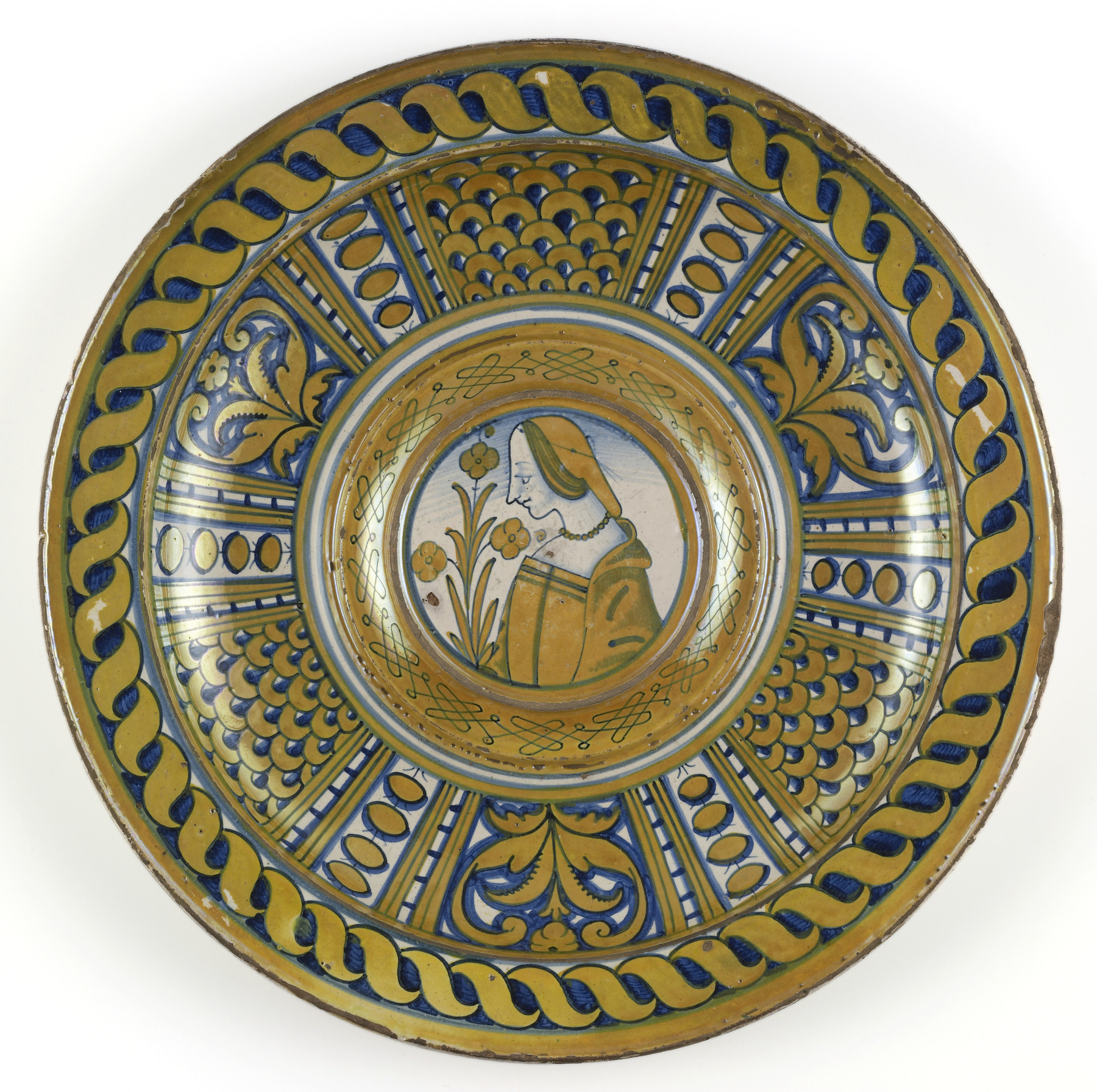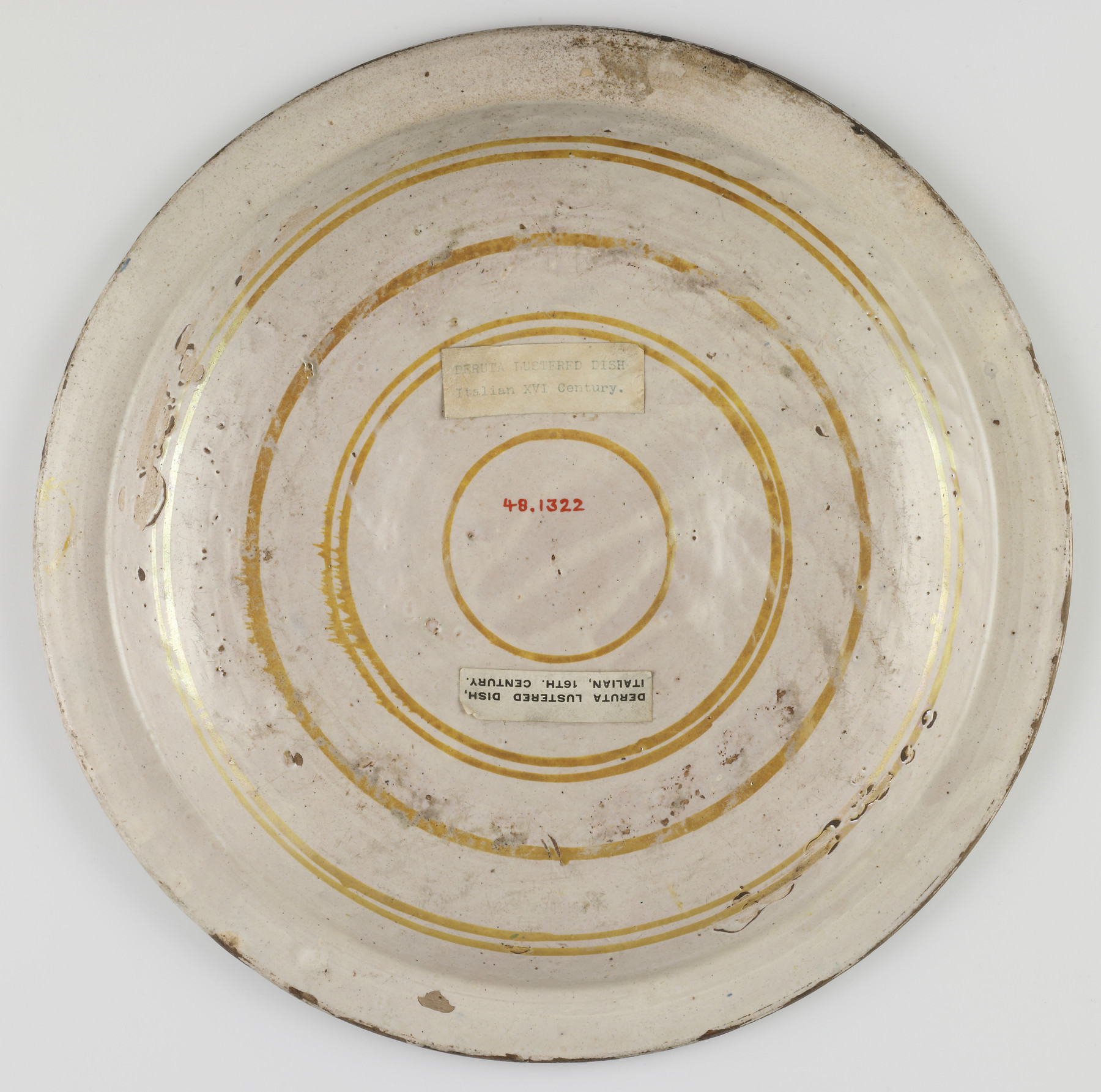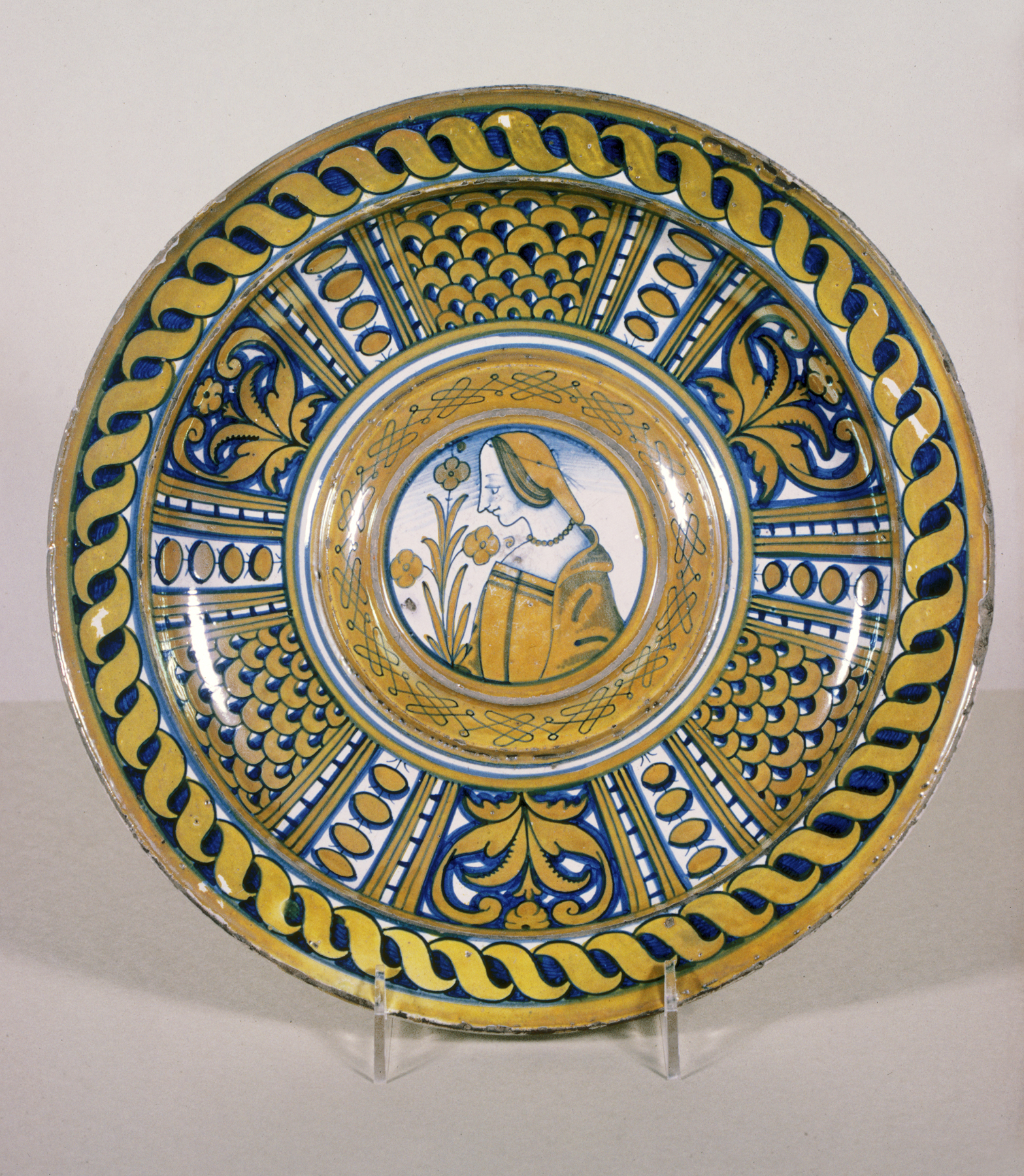Ewer Basin with Female Bust
(Renaissance Europe )
The composition, with a stylized profile of a beautiful woman (Bella Donna) on the central boss and a six-part band of vegetal and geometric ornamentation, is typical of earthenware produced in the maiolica (earthenware with a tin glaze) workshops of Deruta during the early 16th century. There are records of basins, together with their ewers (vase-shaped pitchers), given as special toiletry items to young women. This vessel with an idealized female portrait admiring a plant with flowers at center may have served as such a piece.
For additional images of beautiful women on maiolica ware, see: 48.1351; 48.1358; 48.1510; 48.1741.
For more on earthenware and maiolica see: 48.1320; 48.1336.
Provenance
Provenance (from the French provenir, 'to come from/forth') is the chronology of the ownership, custody, or location of a historical object. Learn more about provenance at the Walters.
Charles Mannheim Collection (?); Seligmann, NY (?); Henry Walters, Baltimore, 1905, [mode of acquisition unknown]; Walters Art Museum, 1931, by bequest.
Geographies
Italy, Deruta (Place of Origin)
Measurements
H: 1 7/16 x Diam: 12 5/16 in. (3.6 x 31.3 cm)
Credit Line
Acquired by Henry Walters
Location in Museum
Not on view
Accession Number
In libraries, galleries, museums, and archives, an accession number is a unique identifier assigned to each object in the collection.
In libraries, galleries, museums, and archives, an accession number is a unique identifier assigned to each object in the collection.
48.1322








